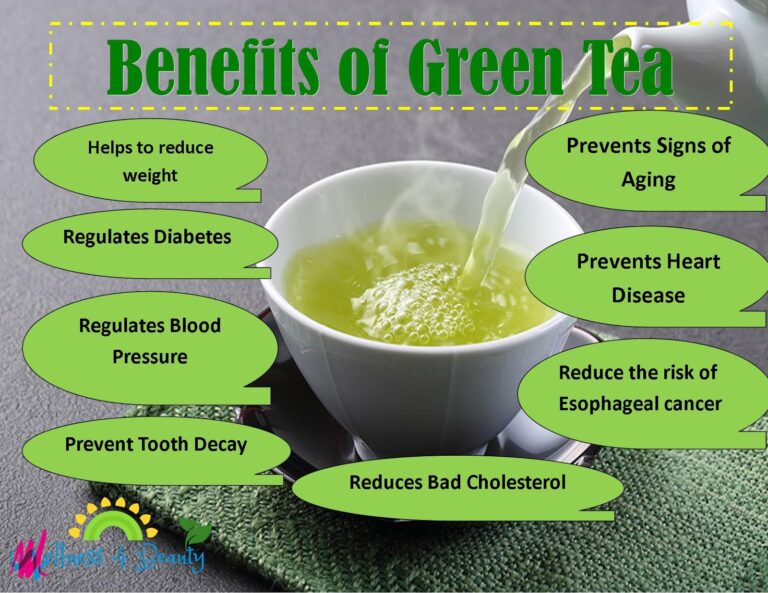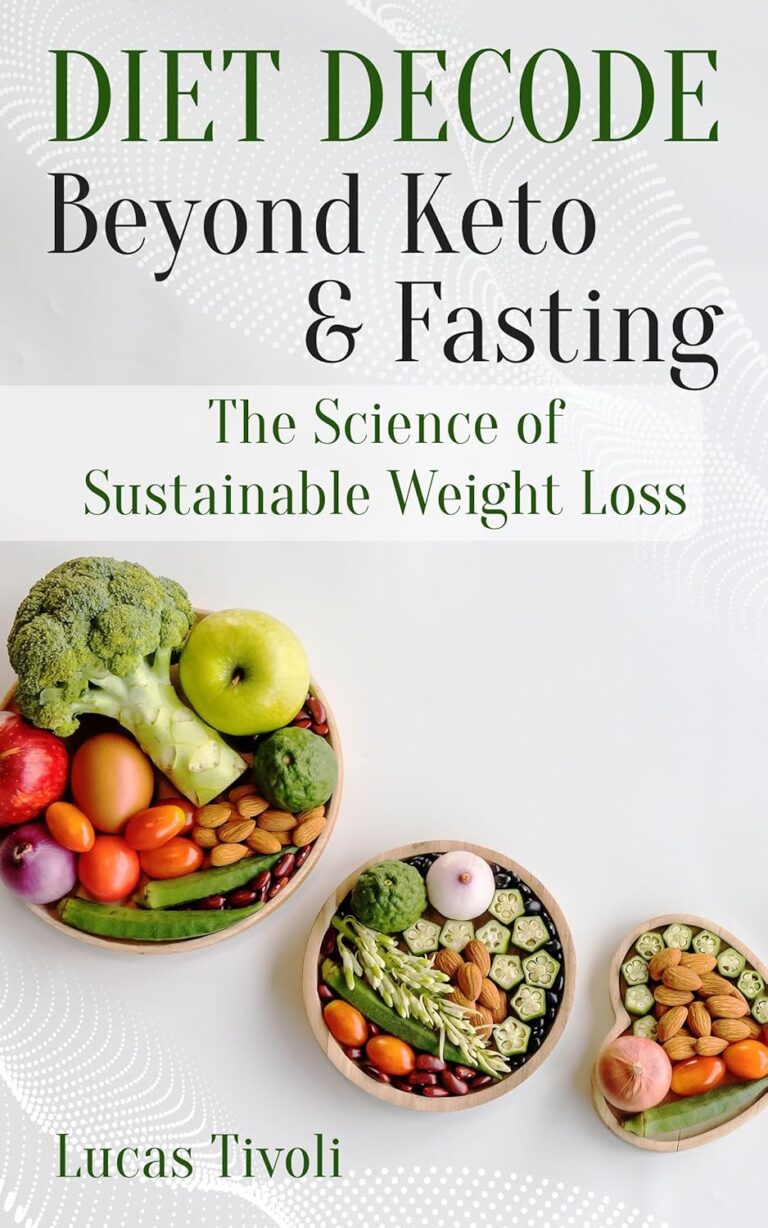The Silent Symphony Within: Eating Your Way to Optimal Magnesium Levels with Chocolate, Nuts, and Beans
In the relentless hum of modern life, where demands often outweigh our resources, many of us find ourselves perpetually seeking an elusive equilibrium. We chase energy, crave restful sleep, battle stress, and yearn for a deeper sense of well-being. Often, in this quest, we overlook a quiet, unassuming orchestrator working tirelessly behind the scenes – a mineral whose profound impact on nearly every bodily function is nothing short of miraculous: Magnesium.
Imagine a grand symphony where every instrument, from the smallest piccolo to the mightiest tuba, plays in perfect harmony. Magnesium is the conductor, the silent maestro ensuring each note is struck with precision, each rhythm is maintained, and the entire composition flows without a single discord. Yet, for countless individuals, this vital conductor is missing from their internal orchestra, leading to a cacophony of subtle symptoms that often go unrecognised or misdiagnosed.
Our journey begins not in a doctor’s office or a supplement aisle, but in the rich tapestry of our culinary world – specifically, in the earthy embrace of beans, the crunchy wisdom of nuts, and the dark, enigmatic allure of chocolate. These humble yet potent ingredients hold within them the keys to unlocking optimal magnesium levels, guiding us towards a more vibrant, balanced, and resilient existence. This is not merely an article about nutrition; it’s a story of discovery, a narrative of reclaiming well-being through intentional, delicious choices, tailored for those who seek to understand the deeper "why" behind their health.
Part 1: The Magnesium Mystery – The Unsung Hero of Our Biology
To truly appreciate the power of chocolate, nuts, and beans, we must first understand the profound significance of magnesium itself. Far from being a mere footnote in nutritional science, magnesium is a foundational element, participating in over 300 enzymatic reactions within the body. It’s a ubiquitous cofactor, meaning it’s a necessary helper molecule for enzymes to perform their jobs. Without it, many of life’s essential processes would grind to a halt.
Let’s pull back the curtain on some of magnesium’s most critical roles:
-
Energy Production (The Spark of Life): At the heart of every cell lies the mitochondria, the powerhouse responsible for generating ATP (adenosine triphosphate), the primary energy currency of the body. Magnesium is absolutely essential for the synthesis and stability of ATP. Without adequate magnesium, your cells struggle to produce energy efficiently, leading to the pervasive fatigue that plagues so many. It’s like trying to start a car with a weak battery – the engine might turn over, but it won’t truly ignite.
-
Nerve and Muscle Function (The Dance of Control): Magnesium plays a crucial role in nerve impulse transmission and muscle contraction and relaxation. It acts as a natural calcium channel blocker, preventing excessive calcium influx into cells, which can lead to muscle over-excitability, spasms, and cramps. Think of it as the brake pedal to calcium’s accelerator. This calming effect extends to the nervous system, where magnesium helps regulate neurotransmitters like GABA (gamma-aminobutyric acid), promoting relaxation and reducing anxiety.
-
Bone Health (Beyond Calcium): While calcium often takes center stage for bone health, magnesium is an equally vital, though less celebrated, co-star. It influences the activity of osteoblasts and osteoclasts (cells responsible for bone formation and breakdown), helps convert vitamin D into its active form (which is crucial for calcium absorption), and directly contributes to bone structure. A deficiency can weaken bones and increase the risk of osteoporosis, even if calcium intake is adequate.
-
Heart Health (The Rhythmic Beat): Magnesium is critical for maintaining a healthy heart rhythm and blood pressure. It helps relax blood vessels, reducing vascular resistance and thereby lowering blood pressure. It also plays a role in preventing calcification of arteries and helps regulate cholesterol levels. A steady supply of magnesium is like a steady hand on the heart’s internal clock, ensuring it keeps a regular, healthy beat.
-
Blood Sugar Regulation (The Metabolic Governor): For those concerned with metabolic health, magnesium is a powerful ally. It enhances insulin sensitivity, allowing cells to more effectively absorb glucose from the bloodstream. This is paramount for preventing insulin resistance and reducing the risk of type 2 diabetes. Magnesium also plays a role in carbohydrate metabolism, helping the body process sugars more efficiently.
-
Stress Response and Mood (The Calming Anchor): In our high-stress world, magnesium emerges as a critical buffer. It helps regulate the body’s stress response system, reducing the release of stress hormones like cortisol. By binding to GABA receptors in the brain, it promotes a sense of calm and can alleviate symptoms of anxiety, depression, and irritability. It’s the mineral equivalent of a deep, calming breath.
-
Sleep Quality (The Restorative Embrace): Following its role in relaxation and stress reduction, it’s no surprise that magnesium is a powerful aid for sleep. It helps quiet the nervous system, prepares the body for rest, and can improve sleep onset and duration. It’s the lullaby your body needs after a long day.
This intricate web of functions underscores magnesium’s indispensable nature. It is not a supplement for a specific ailment but a fundamental building block for overall vitality. Understanding its breadth of influence is the first step in appreciating why its deficiency can manifest in such a bewildering array of symptoms.
Part 2: The Silent Epidemic – Understanding Magnesium Deficiency
Despite its critical importance, magnesium deficiency is surprisingly common, often dubbed a "silent epidemic." Estimates suggest that a significant portion of the global population, particularly in Western countries, does not meet the recommended daily intake. The reasons for this widespread deficiency are multi-faceted, reflecting the complex interplay of modern agriculture, dietary habits, and lifestyle factors.
-
The Modern Diet (The Depleted Pantry): Our reliance on processed foods is perhaps the biggest culprit. Refining grains, for instance, strips away a vast majority of their magnesium content. White flour, white rice, and many sugary snacks are virtually devoid of this vital mineral. Furthermore, modern farming practices have led to significant soil depletion. Years of intensive farming, synthetic fertilizers, and pesticides have leached magnesium and other minerals from the soil, meaning that even "whole foods" grown today may contain less magnesium than their counterparts from a century ago.
-
Lifestyle Factors (The Constant Drain):
- Stress: Chronic psychological and physical stress depletes magnesium rapidly. The body uses magnesium to fuel its stress response, creating a vicious cycle where stress leads to deficiency, which in turn exacerbates stress and anxiety.
- Alcohol: Excessive alcohol consumption increases magnesium excretion through the kidneys, leading to significant losses.
- Caffeine: While a morning cup of coffee can be a ritual, excessive caffeine intake can also contribute to magnesium loss.
- Certain Medications: Diuretics, proton pump inhibitors (PPIs) for acid reflux, and some antibiotics can interfere with magnesium absorption or increase its excretion.
- Excessive Calcium Intake: While calcium is vital, an imbalance with magnesium can hinder absorption and utilization, particularly if calcium is consumed in high doses from supplements without adequate magnesium.
- Gut Health Issues: Conditions like Crohn’s disease, celiac disease, or chronic diarrhea can impair nutrient absorption, including magnesium.
-
The Symptoms (The Whispers of Imbalance): The insidious nature of magnesium deficiency lies in its varied and often non-specific symptoms, which can mimic other conditions, making diagnosis challenging. These whispers of imbalance often escalate into a chorus of complaints:
- Fatigue and Weakness: Persistent tiredness, even after adequate sleep.
- Muscle Issues: Cramps, spasms, tremors, restless leg syndrome.
- Neurological Symptoms: Headaches, migraines, numbness or tingling, anxiety, irritability, difficulty concentrating, brain fog.
- Cardiovascular Issues: Heart palpitations, abnormal heart rhythms.
- Sleep Disturbances: Insomnia, difficulty falling or staying asleep.
- Digestive Problems: Constipation.
- Bone Issues: Increased risk of fractures.
- Metabolic Issues: Insulin resistance, cravings for sugar.
Compounding the problem is the difficulty in accurately testing for magnesium deficiency. Standard blood tests (serum magnesium) typically measure less than 1% of the body’s total magnesium, with the vast majority stored in bones and soft tissues. Therefore, a "normal" serum magnesium level doesn’t necessarily rule out a cellular deficiency. This is why paying attention to symptoms and proactively incorporating magnesium-rich foods is paramount.
Having unveiled the profound significance of magnesium and the silent challenges of its deficiency, our journey now turns to the most delightful part: discovering how to replenish this vital mineral through the very foods we love.
Part 3: The Culinary Compass – Navigating to Magnesium-Rich Foods
The good news is that nature, in its infinite wisdom, has provided us with an abundance of delicious, magnesium-rich foods. Our focus today is on three particular champions: chocolate, nuts, and beans. These aren’t just sources of magnesium; they are nutritional powerhouses, offering a spectrum of other beneficial compounds that work synergistically to support overall health.
1. Chocolate: The Indulgent Ally (Dark, Not Dairy)
Let’s start with the one that often brings a smile to people’s faces: chocolate. But not just any chocolate. We’re talking about dark chocolate, specifically varieties with 70% cocoa solids or higher. The darker the chocolate, the higher the cocoa content, and thus, the higher the magnesium.
- Magnesium Content: A 1-ounce (28-gram) serving of dark chocolate (70-85% cocoa) can provide approximately 64 mg of magnesium, or about 16% of the Daily Value (DV).
- Beyond Magnesium: Dark chocolate is also a rich source of iron, copper, manganese, and fiber. Crucially, it’s packed with potent antioxidants called flavanols, which have been linked to improved heart health, reduced inflammation, and enhanced brain function. The presence of tryptophan, a precursor to serotonin, also contributes to its mood-boosting properties.
- The Nuance: The key here is quality and moderation. Milk chocolate, with its lower cocoa content and higher sugar, won’t offer the same benefits. Choose high-quality dark chocolate, ideally organic and fair-trade, to maximize its nutritional punch while minimizing unwanted additives. Enjoy a square or two as a mindful treat, rather than devouring an entire bar. Think of it as medicine you truly enjoy.
2. Nuts: Nature’s Powerhouses (Crunchy Wisdom)
Nuts are the quintessential healthy snack, and for good reason. They are calorie-dense but nutrient-rich, offering a fantastic array of healthy fats, protein, fiber, and, of course, magnesium.
- Almonds: Often crowned the king of magnesium-rich nuts. A 1-ounce (28-gram) serving (about 23 almonds) contains around 76 mg of magnesium, providing 19% of the DV. They also boast vitamin E, manganese, and healthy monounsaturated fats.
- Cashews: These creamy, kidney-shaped nuts are another excellent source, offering about 73 mg of magnesium per ounce (18% DV). Cashews also provide iron, zinc, and selenium.
- Brazil Nuts: While famous for their selenium content, Brazil nuts also contribute a decent amount of magnesium, with about 107 mg per ounce (27% DV). However, due to their exceptionally high selenium content, moderation is key (1-2 nuts per day is often sufficient).
- Walnuts, Pecans, Hazelnuts: These also contain respectable amounts of magnesium, along with omega-3 fatty acids, antioxidants, and fiber.
- The Nuance: Nuts are calorie-dense, so portion control is important. Aim for a small handful (1-2 ounces) per day. For optimal digestibility and nutrient absorption, consider soaking and sprouting nuts to reduce phytic acid content, an anti-nutrient we’ll discuss shortly. Enjoy them raw, roasted (without excessive oil), or as nut butter.
3. Beans: The Humble Heroes (Earth’s Embrace)
Beans, legumes, and pulses are often overlooked, yet they are nutritional powerhouses that have sustained civilizations for millennia. They are incredibly versatile, affordable, and packed with fiber, protein, and a wealth of micronutrients, including magnesium.
- Black Beans: A powerhouse of nutrition, a 1-cup (172-gram) serving of cooked black beans provides approximately 120 mg of magnesium, an impressive 30% of the DV. They are also incredibly rich in soluble and insoluble fiber, which supports gut health and blood sugar regulation, and provide plant-based protein, folate, and iron.
- Kidney Beans: Similar to black beans, cooked kidney beans offer about 74 mg of magnesium per cup (19% DV), along with substantial fiber and protein.
- Lima Beans (Butter Beans): These creamy beans are another excellent source, with around 126 mg of magnesium per cup (32% DV).
- Chickpeas (Garbanzo Beans): Versatile and delicious, chickpeas contain about 79 mg of magnesium per cup (20% DV), making them a staple for hummus, curries, and salads.
- Lentils: While slightly lower in magnesium than some larger beans, a cup of cooked lentils still provides around 71 mg (18% DV), along with their legendary fiber and protein content.
- The Nuance: Like nuts, beans contain phytic acid, which can bind to minerals and hinder absorption. However, proper preparation methods – soaking, rinsing, and thorough cooking – significantly reduce phytic acid content, making their nutrients more bioavailable. For those sensitive to gas, starting with smaller portions and ensuring proper cooking can help.
Other Magnesium-Rich Allies:
While chocolate, nuts, and beans are our focus, it’s worth briefly mentioning other excellent sources to round out your magnesium-rich plate:
- Leafy Green Vegetables: Spinach, kale, Swiss chard are packed with magnesium (e.g., 1 cup cooked spinach has 157 mg / 39% DV).
- Seeds: Pumpkin seeds (156 mg / 39% DV per ounce), chia seeds, flaxseeds.
- Whole Grains: Quinoa, brown rice, oats (though less than beans and nuts).
- Avocado: About 58 mg per medium avocado (15% DV).
- Bananas: About 32 mg per medium banana (8% DV).
- Fatty Fish: Salmon, mackerel (though the magnesium content is lower than plant sources).
Embracing these foods is not about strict adherence but about mindful incorporation. It’s about building a pantry of power, making conscious choices that nourish your body from the inside out.
Part 4: Optimizing Absorption – Beyond Just Eating
Simply consuming magnesium-rich foods isn’t always enough. For a truly knowledgeable audience, understanding the nuances of absorption is crucial. Several factors can influence how well your body actually utilizes the magnesium you consume, transforming a potential benefit into a tangible reality.
-
The Gut-Brain Axis: A Healthy Foundation: Your digestive system is the gateway for nutrient absorption. A healthy gut microbiome, free from inflammation and dysbiosis, is essential for optimal magnesium uptake. Conditions like leaky gut syndrome, irritable bowel syndrome (IBS), or chronic inflammation can impair the integrity of the intestinal lining, reducing its ability to absorb minerals effectively. Prioritizing gut health through a diverse diet rich in fiber, fermented foods, and avoiding inflammatory triggers is a foundational step.
-
Navigating Anti-Nutrients: Phytic Acid and Oxalates:
- Phytic Acid (Phytate): Found in the outer layers of grains, nuts, seeds, and legumes, phytic acid can bind to minerals like magnesium, zinc, and iron, forming insoluble complexes that are difficult for the body to absorb.
- Mitigation Strategies: The good news is that traditional preparation methods effectively reduce phytic acid:
- Soaking: Soaking nuts, seeds, and legumes for several hours (or overnight) in water, then rinsing thoroughly, activates the enzyme phytase, which breaks down phytic acid.
- Sprouting: Sprouting further reduces phytic acid and increases the bioavailability of nutrients.
- Fermenting: Fermentation (e.g., sourdough bread, tempeh) also helps break down phytates.
- Cooking: Thorough cooking of legumes significantly reduces phytate levels.
- Mitigation Strategies: The good news is that traditional preparation methods effectively reduce phytic acid:
- Oxalates: Found in some magnesium-rich foods like spinach and Swiss chard, oxalates can also bind to minerals.
- Mitigation Strategies: Cooking (especially steaming or boiling) reduces oxalate content. Pairing oxalate-rich foods with calcium (e.g., spinach with a sprinkle of cheese) can help bind oxalates in the gut, preventing their absorption. For most people, the benefits of these nutrient-dense foods far outweigh the concerns about oxalates, especially with proper preparation.
- Phytic Acid (Phytate): Found in the outer layers of grains, nuts, seeds, and legumes, phytic acid can bind to minerals like magnesium, zinc, and iron, forming insoluble complexes that are difficult for the body to absorb.
-
Synergistic Nutrients: The Supporting Cast: Magnesium doesn’t work in isolation. Its absorption and function are often enhanced by the presence of other nutrients:
- Vitamin D: Crucial for magnesium absorption in the gut. Ensuring adequate vitamin D levels (through sunlight exposure or supplementation) is vital.
- Vitamin B6: Involved in several magnesium-dependent enzymatic reactions and may aid in cellular uptake of magnesium.
- Potassium: Works closely with magnesium to maintain electrolyte balance and cellular function. Many magnesium-rich foods (like beans and dark leafy greens) are also excellent sources of potassium.
- Selenium: Found alongside magnesium in Brazil nuts, selenium has its own host of benefits and can work with magnesium in antioxidant defense.
-
The Balancing Act: Calcium and Magnesium: While both are essential, their ratio is important. High calcium intake, particularly from supplements without corresponding magnesium, can actually deplete magnesium. Calcium and magnesium compete for absorption sites, and an excess of one can hinder the absorption of the other. The ideal ratio is often debated, but a general guideline is to ensure magnesium intake is at least half of your calcium intake, or even a 1:1 ratio for some individuals. Focusing on whole-food sources of both minerals generally provides a more balanced approach than relying on isolated supplements.
-
Lifestyle Factors: Stress, Sleep, and Exercise:
- Stress Management: As mentioned, chronic stress is a major magnesium depleter. Incorporating stress-reducing practices like meditation, yoga, deep breathing, or spending time in nature can significantly reduce magnesium expenditure.
- Quality Sleep: Adequate sleep allows the body to repair and replenish, optimizing cellular functions, including mineral balance.
- Regular Exercise: While intense exercise can temporarily increase magnesium loss through sweat, regular moderate exercise improves overall nutrient utilization and reduces stress, indirectly supporting magnesium levels.
By understanding and implementing these strategies, you move beyond simply eating the right foods to actively ensuring your body is a well-tuned machine, ready to extract and utilize every precious milligram of magnesium.
Part 5: Crafting Your Magnesium-Rich Lifestyle – Practical Integration
Now, armed with knowledge of magnesium’s vital roles, the prevalence of its deficiency, and the bounty of foods that offer it, the final step is to integrate this understanding into your daily life. This isn’t about draconian dietary overhauls but about a delightful exploration of flavors and mindful choices.
Meal Ideas: A Culinary Canvas
Let’s imagine a day filled with magnesium-rich delights:
- Breakfast (The Energetic Start):
- Option 1: A bowl of rolled oats (a whole grain) topped with a handful of sliced almonds or chopped walnuts, a sprinkle of chia seeds, and a few berries.
- Option 2: A smoothie made with spinach, half a banana, a tablespoon of almond butter, and unsweetened plant milk.
- Option 3: Black bean and avocado toast on whole-grain bread.
- Lunch (The Sustaining Fuel):
- Option 1: A vibrant salad featuring mixed greens (spinach, kale), chickpeas, slivered almonds, and a light vinaigrette.
- Option 2: A hearty lentil soup or a black bean burger on a whole-wheat bun with plenty of fresh vegetables.
- Option 3: A Buddha bowl with quinoa, roasted sweet potatoes, steamed broccoli, and a generous serving of kidney beans, drizzled with tahini dressing.
- Dinner (The Relaxing Close):
- Option 1: Salmon (for its vitamin D and healthy fats) served with a side of steamed Swiss chard and brown rice.
- Option 2: A vegetarian chili loaded with black beans, kidney beans, tomatoes, and various vegetables, topped with a dollop of avocado.
- Option 3: A flavorful curry featuring chickpeas and spinach, served with a small portion of whole-grain naan or brown rice.
- Snacks (Mindful Indulgences):
- A handful of pumpkin seeds or cashews.
- A small square (or two) of 70%+ dark chocolate.
- Hummus with vegetable sticks.
- An apple with almond butter.
Mindful Eating: Savoring the Journey
Beyond the specific foods, cultivating a mindful approach to eating enhances the entire experience. Savor the flavors, appreciate the textures, and connect with the nourishment you are providing your body. This mindful connection can also help reduce stress, further supporting magnesium retention.
When to Consider Supplements: A Bridge, Not a Crutch
While a food-first approach is always ideal, there are circumstances where magnesium supplementation might be beneficial, especially for individuals with significant deficiencies, specific health conditions, or those unable to meet their needs through diet alone. However, this should always be done under the guidance of a healthcare professional.
- Forms of Magnesium: For a knowledgeable audience, understanding the different forms is key:
- Magnesium Glycinate: Highly bioavailable, gentle on the stomach, often recommended for relaxation and sleep due to the glycine.
- Magnesium Citrate: Well-absorbed and commonly used for constipation due to its mild laxative effect.
- Magnesium Malate: Often favored for energy production and muscle pain due to its combination with malic acid.
- Magnesium L-Threonate: Known for its ability to cross the blood-brain barrier, making it potentially beneficial for cognitive function and brain health.
- Magnesium Oxide: Less bioavailable, primarily used as an antacid or for severe constipation.
- Magnesium Sulfate (Epsom Salts): Used topically in baths for muscle relaxation, though systemic absorption is limited.
A qualified practitioner can help determine the appropriate form and dosage, taking into account individual needs and potential interactions with medications. Supplements should be viewed as a bridge to optimal levels, not a permanent replacement for a nutrient-dense diet.
Listening to Your Body: The Ultimate Guide
Ultimately, your body is the most sophisticated feedback system you possess. Pay attention to how you feel. Are your energy levels improving? Is your sleep more restorative? Are muscle cramps less frequent? Is your mood more stable? These subtle shifts are indicators that your magnesium journey is bearing fruit. Bio-individuality is paramount; what works perfectly for one person might need slight adjustments for another.
Conclusion: The Enduring Harmony
Our journey through the silent symphony of magnesium, guided by the culinary compass of chocolate, nuts, and beans, culminates in a profound understanding: true well-being is often found not in complex solutions, but in the intelligent application of nature’s simplest gifts. Magnesium, the unsung hero, the quiet conductor, orchestrates a multitude of vital functions, and its deficiency can cast a long shadow over our health.
But the narrative doesn’t end in shadows. It illuminates a path forward, paved with the rich, dark indulgence of chocolate, the crunchy wisdom of almonds and cashews, and the earthy, humble power of black beans and lentils. These are not just foods; they are allies in your quest for optimal health, offering a delicious and sustainable way to replenish your body’s most fundamental needs.
By consciously choosing these magnesium-rich foods, preparing them thoughtfully, and integrating them into a mindful lifestyle, you are not just eating; you are actively participating in the restoration of your internal harmony. You are providing your body with the conductor it needs to play its most vibrant, energetic, and resilient symphony. So, embark on this delicious journey, listen to your body’s whispers, and rediscover the profound power of simple, wholesome nourishment. The silent symphony within awaits your mindful orchestration.





